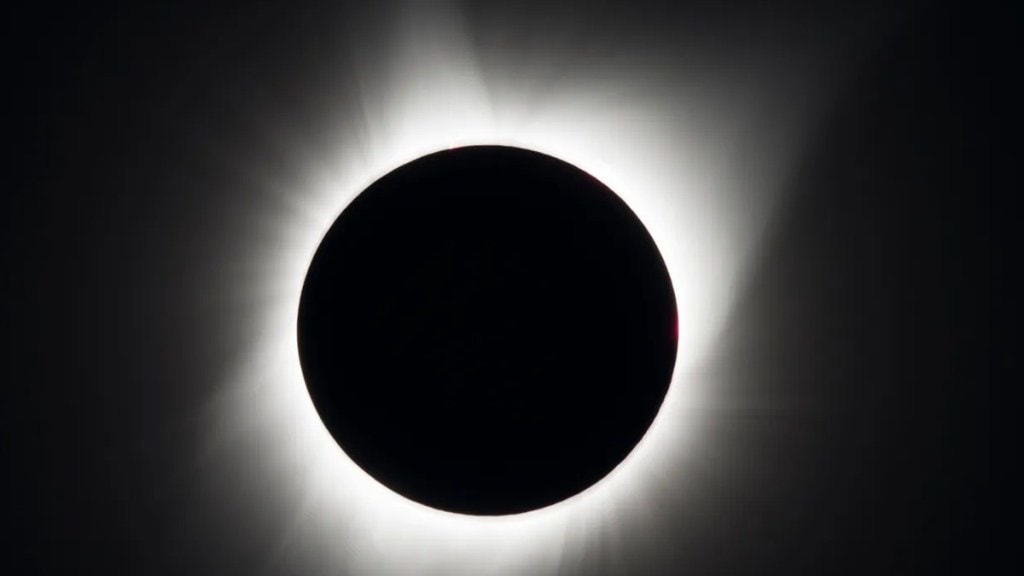A rare total solar eclipse will traverse North America, passing over Mexico, the United States (US) and Canada on Monday, April 8. These occurrences are infrequent for any specific location. Royal Museums Greenwich states that once a spot on Earth experiences a total solar eclipse, it will be approximately 400 years before that region witnesses another.
What exactly is a solar eclipse?
A solar eclipse unfolds when the Moon manoeuvres itself between Earth and the Sun, obstructing the Sun’s light either partially or entirely, thus casting a vast shadow over specific areas of the globe. There are four primary types of solar eclipses: total, annular, partial and hybrid, according to The Indian Express.
Solar eclipse varieties explained
Total Solar Eclipse: During a total solar eclipse, the Moon completely obscures the Sun, casting a region within the central part of the Moon’s shadow into darkness. Observers within the path of totality may witness the Sun’s corona—the outer atmosphere—usually invisible due to the Sun’s brightness.
Annular Solar Eclipse: An annular solar eclipse arises when the Moon passes in front of the Sun but is at or near its farthest point from Earth. This results in a striking “ring of fire” effect as only the Sun’s periphery remains visible.
Partial Solar Eclipse: A partial solar eclipse occurs when the Moon obstructs only a portion of the Sun, leaving it with a crescent shape. During both partial and annular eclipses, regions outside the Moon’s umbra—the central and darkest part of its shadow—experience a partial solar eclipse. Partial solar eclipses are the most common type, as per The Indian Express.
Hybrid Solar Eclipse: The rarest form of solar eclipse is the hybrid solar eclipse, witnessed when an eclipse transitions between annular and total as the Moon’s shadow traverses the Earth. Some areas experience a total solar eclipse, while others observe an annular one.
How frequently do solar eclipses occur?
Solar eclipses only arise during a new moon phase when the Moon and Sun align on the same side of Earth. A new moon occurs approximately every 29.5 days, corresponding to the Moon’s orbit around Earth. However, this does not guarantee a solar eclipse every month; they occur only between two to five times annually. Why is this?
The Moon’s orbit around Earth is tilted by about five degrees relative to Earth’s orbit around the Sun. Consequently, when the Moon is between the Sun and Earth, its shadow is often positioned too high or low to intersect with Earth.
Why are total solar eclipses so rare?
Despite there being between two and five solar eclipses annually, total eclipses occur only about once every 18 months. As previously mentioned, a specific location on Earth witnesses a total solar eclipse once every 400 years.
This rarity stems from the fact that a total eclipse is visible only within the umbra—the darker portion of the Moon’s shadow. The umbral shadow is exceedingly small, covering less than one percent of Earth’s surface during a solar eclipse. Additionally, approximately 70 percent of the globe is covered by water, and half of the landmass is uninhabited. Hence, it is uncommon for a total solar eclipse to be visible to a large population.

